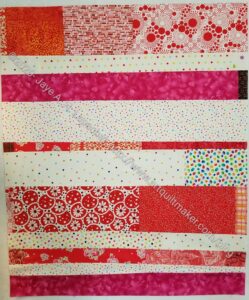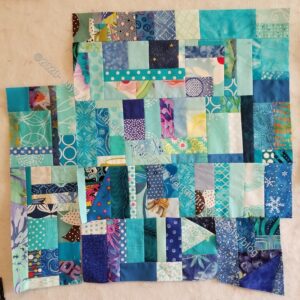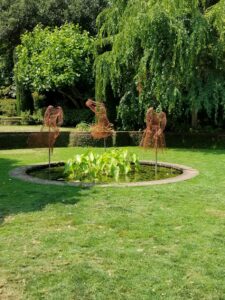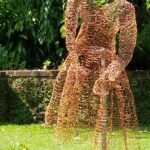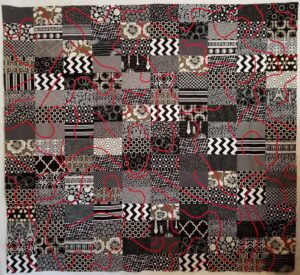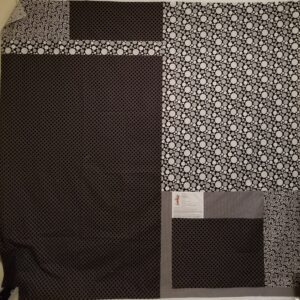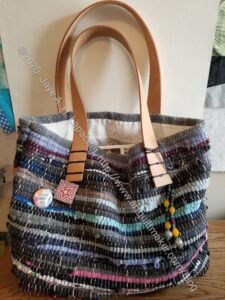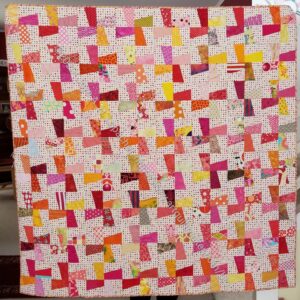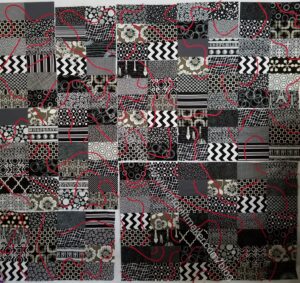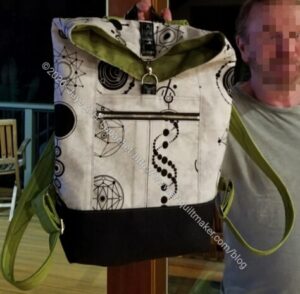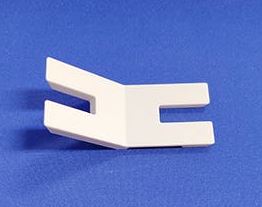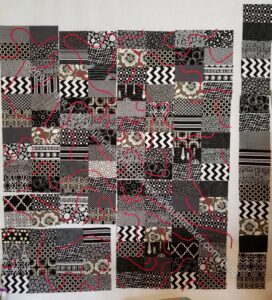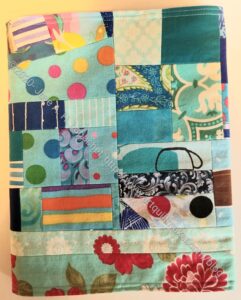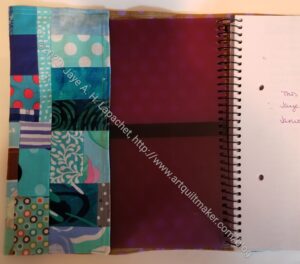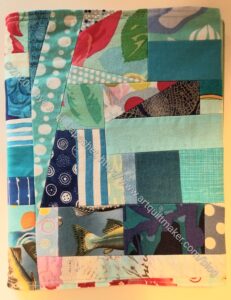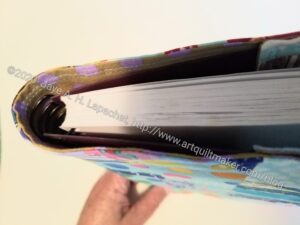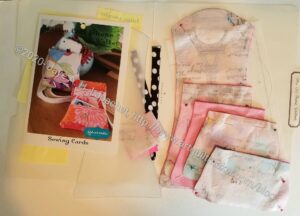Admin
I have created page that contains all the supplies I like and use. Yes, I have included links and most of them are affiliate links which help support this blog. Right now it is just a list, but I intend to add photos and more commentary as time goes on.
Fabric, Notions, Supplies, Books & Tools
My guild-mate, Alison recommends Sew Perfect Tables for your sewing machine. Having a flush surface on which to sew is really important for ergonomics.
Barbara Brackman is revising BlockBase (with Electric Quilt) and her Encyclopedia of Pieced Patterns. I have the older versions of both and love having access to all of the blocks. They provide a lot of inspiration. You can still buy the current edition of the Encyclopedia and BlockBase on Amazon. There is more information on the EQ site. I’ll want the updated versions when they come out, but I’ll have to play around with installing EQ8 on my new computer (8 months later!).
I found a fabric shop, Fenwick Fabrics, with a great selection of Kaffe, Anna Maria Horner, KFC, Snow Leopard and Tula Pink. In addition to fabric, they have kits for interesting quilts, books and pre-cuts.
My new favorite Janome machine is the Continental M7! I keep hearing about Sarah’s glowing experiences. It is not in the budget right now, but maybe soon. We’ll see.
I heard about Annie’s Kit Clubs from Stitched in Color. Per the list of subscription boxes I wrote about last time, here is another fabric club. I don’t have a sense of the types of fabrics they include, but they are not off brand. The fabric companies mentioned are all current and have good products.
I was looking for a Hump Jumper and came across Pocono Sew & Vac. I bought a couple of things I needed for my Janome machine. I found the site easy to use, the ecommerce piece wasn’t stupid or janky. It didn’t take me forever to find what I needed and buy it. The integration with PayPal was good, too. The only negative was that it isn’t local. It does look like a small business, though, so there is that.
WovenFuse is a new interfacing that is, supposedly, the same weight as SF101,but is wider at 45″ than SF101’s 20″. The vendor in the US is Barb’s Bags. I could do without the references to God, but I can ignore those. I have a new bolt of SF101, but I’ll keep this in mind for when I need to get more.
Projects, Patterns & Tutorials
Reece from the Happy Okapi blog has a video and more information on the Companion Carpet Bag by Mrs H that I mentioned in the last V&S.
Art Gallery Fabrics has a variety of tutorials from installing a zipper pocket to everything about needles. The titles are all the same, so read the description for the details.
Need to know what you can cut from a FQ? Find a chart on IG.
Need some stitching inspiration? Check out Needle ‘n Thread. Thanks to Sandy over at Quilting for the Rest of Us.
You might remember that Friend Julie and I did a test some years ago of a Laura Wheeler pattern called Snowball Wreath. I was reading Barbara Brackman’s blog recently where I found a post on Laura, and Alice Brooks. This post is really funny (in a quilt sort of way). She reminded me that neither lady were real, thus neither ever made a quilt in her life! Thus the crazy patterns and piecing like in the Snowball Wreath. I absolutely not want to pit my two favorite block researchers against each other. I also don’t know the ethics, but there were a couple of blocks Barbara mentioned in a previous post on Alice Brooks, which I found in Jinny Beyer’s The Quilter’s Album of Patchwork Patterns.
The Million Pillowcase Challenge is 35,000 pillowcases away from reaching one million! 35,000 is still a lot of pillowcases, but how close the project is to 1 million is blowing my mind. All of you who have contributed are awesome!! Now’s your chance to take a break from mask making and to use up some fabric.
As you know, one of the reasons I have been making the Color Strip quilts and the Color Improv quilts is to lighten the scrap load in my workroom. Tim texted about one of his projects that sent me over to Svetlana’s blog where I found her #100scrapchallenge. She is doing something different than I am, but is using her scraps. I am glad to know someone else is doing something useful like this.
Julie of Jaybird Quilts announced yesterday that she was running a skill builder from September through December, to help you become comfortable with the rulers, pattern instructions, etc before the Nebula Sew-a-Long at Pink Door (kits, etc sold out when I looked) begins. The goal is to help you familiarize yourself with using the Hex N More** & Super Sidekick** (or Sidekick**) rulers, cutting, & piecing shapes from the rulers, so even if you aren’t doing the Nebula Sew-a-Long, this skill builder series will help you perfect your skills at using these rulers. You can also join the Sew-a-Long at Elkhorn Quilts.
Tim pointed me to the Finley tote by Sotak handmade. She has photos of the inside and outside of the bag. I like the shoulder strap treatment.
Parallel Universe is a mystery quilt project by Ebony Love, Gyleen X. Fitzgerald and Latifah Safir. Did you know all of these ladies are engineers? You know the directions will be clear and correct! The mystery is starting January 1, 2021 and extends for 6 weeks. This project has a kit of fabric and tools you can purchase, if you need them. I haven’t decided if I want to do it. I am leaning towards no, but you never know.
Sharon of Color Girl Quilts has a tutorial up on her blog for sewing a full set in circle. This is a great skill to have. Dale Fleming has a book** on the topic. I wrote something about the Dale Fleming workshop I took several years ago. Steps on how to set in a circle are included in the Ruth McDowell Piecing** book that I keep trying to get you to buy. It is a really great book if you want to learn advanced piecing skills. Three methods, so try it out.
Face Masks
- Improved Summer Mask tutorial (video) by Keiko Olsson
- Judy Coates Perez mask tutorial based on the Improved summer mask tutorial by Keiko Olsson. Judy also has some wonderful fabrics in her new Spoonflower shop that make fun masks.
- Friend Julie posted an article about a study that was done comparing how masks work when made from different materials. I was thinking that a runner’s neck gaiter might be the best ‘mask’ for use when the gym reopens, but it got very low scores on the study’s test, so maybe not. Not sure how to resolve that issue.
Other Artists
I wrote about Jolene of Blue Elephant Stitches in a post last week (?). After I wrote that post I went looking for the quilt that sent me to her blog in the first place. I finally found it in a post of gorgeous scrappy quilts! It is third to last in the parade of fabulousness and has a Jacob’s Ladder type look, but with 9 patches and big squares of scrappy fabrics on point. The first one in the group looks like one of my Fabric of the Year quilts.
Friend Julie has a lot of interesting links to various exhibits on her recent Cornucopia post.
History
Barbara Brackman pointed me to a page that discusses the corporate structure of the syndicate that owned Laura Wheeler and Alice Brooks brands. One of the interesting this about this article/page is that it gives readers an idea of how research is done and how a person has to go about finding information from back in the day. The page was created by Wilene Smith and has a number of fascinating rabbit holes.
Media, Exhibitions, Lectures & Collections
I recently found a new (to me) blog that is still being updated! Jolene of Blue Elephant Stitches is showing off her scrap quilts and has recent post about selecting fabrics.
My friend, Dolores, has a quilt in a gallery in Boulder. They have an online version of the show.
A guild-mate, Geri, has award-winning quilts at the Carnegie Arts Center in Turlock.
San Francisco Craft Week will be held September 7-13. 130 vendors will be showing and selling their wares. There will also be Maker Meetups, Workshops and Artists’ Playlists. Look at the site for the complete agenda.
Inspiration
I saw some tile on IG that I really liked.
*Check your local public library for access if you don’t have a subscription
**I use affiliate links and may be paid for your purchase of an item when you click on an item link in my post. There is no additional cost to you for clicking or purchasing items I recommend. I appreciate your clicks and purchases as it helps support this blog.
